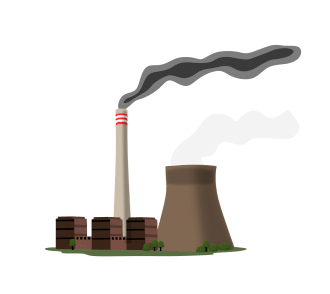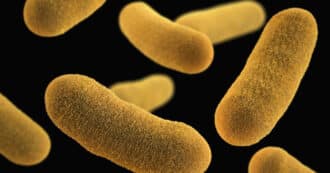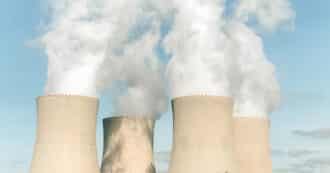By Elisheva Malomet – We utilize earth’s resources in almost every aspect of our lives. This includes renewable and non-renewable resources used to produce energy, generate electricity, enable transportation, and also use resources for agricultural production.
The pure magic of electricity, modern electronics, and general consumption is lost on us because of the concealment of this power by the simplicity of the flip of a switch.
While electricity and therefore energy is extremely accessible to many people in the modern world, we are currently depleting nonrenewable resources at drastic rates.
However, not all earth’s resources are finite. If we shift our focus to renewable resources that are infinite, we will harness a more sustainable future for the planet.
Natural Resources, Renewable or Non-Renewable?
Let’s understand what kind of resources we are using during our daily lives. We will explore nonrenewable resources; what they are and how they are dangerous, and explore the solutions that come from renewable and nondepletable resources.
Firstly, an important distinction should be made: natural resources, including fossil fuels like coal and natural gas, are resources that come from the earth. This does not mean that they are renewable, and in fact many of them are nonrenewable.
Nonrenewable resources
Energy is the main way we interact with nonrenewable resources. Non-renewable energy sources include fossil fuels such as coal and natural gas. Additionally, nonrenewable resources appear in our manufacturing tools and our electronics in the form of steel, aluminum, phosphates, and rare earth metals. All of these resources are nonrenewable because when they are used their source diminishes.
Coal – Nonrenewable
Coal, a fossil fuel, is one of the prevailing nonrenewable energy resources that we use and abuse. Coal is formed primarily from the remains of trees and plant materials that were preserved up to 360 million years ago. Most electricity generation in the world today is fueled by coal, especially in China. Coal is also seemingly plentiful, as the U.S. Energy Information Association notes.
The negative environmental impacts of coal are extremely significant. The mining process of coal on the earth’s surface has a devastating effect on the earth’s landscape, specifically when utilizing the mountaintop removal technique. This type of coal acquisition destroys the ecosystems of mountains and leads to erosion and horrible runoff which enters the freshwater supplies in the area.
The burning and combustion of coal are also problematic. This process releases greenhouse gases into the atmosphere, contributing to toxic air pollution and climate change.
Gas and Oil – Nonrenewable
Gas and oil are nonrenewable energy fuels that also function as main energy resources. Most of the world’s car, trucks, and planes use petroleum as fuel. Petroleum is formed from the remains of ocean-dwelling phytoplankton that died approximately 150 million years ago. Natural gas is found as a component of petroleum, as well as in gaseous deposits separate from petroleum.
Both of these energy sources release carbon dioxide into the atmosphere and natural gas also releases methane due to leaks in the process of extracting it. The extraction of oil fuel has caused major damage to marine ecosystems from oil rig malfunctions and spills in our oceans and from runoff caused by extraction on land.
Steel and Aluminum – Nonrenewable
Steel and aluminum are metals that are extracted from the earth and are nonrenewable. These resources are part of our daily lives, whether they make up our appliances or manufacturing equipment or enable the agricultural processes that feed our planet to work.
Aluminum and iron ore, a main component of steel, are acquired from open-pit mining which is detrimental to the earth and ecosystems, resulting in pollutant-filled runoff and climate problems.
Rare Earth Metals – Nonrenewable
The extraction of rare earth metals is complicated as these elemental structures are connected with other minerals. Rare earth metals are an important nonrenewable resource that is an essential component in all our electronic and high-tech devices.
The extraction of these rare earth metals from the earth is harmful to our environment and our extreme dependence on them as nonrenewable resources is a cause for concern. It is time to start studying and exploring renewable solutions to create our high-tech gadgets.
Phosphates – Nonrenewable
Phosphates, which come from the element phosphorus, are an extremely important resource in our daily lives. This resource is so important in conventional agriculture, much of farming and cultivating is actually dependent on phosphates in fertilizer to feed our plants and animals.
Phosphates are mined from minerals inside of the earth and refined and purified for its application in many widespread products. However, continued massive extraction of this nonrenewable resource is not sustainable, as Julia Rosen notes in The Atlantic.
Renewable Resources
Alas, there are renewable solutions that cause exponentially less harm to the environment and could enable a cleaner future. We are able to harness energy that fuels our environment with renewable resources and methods.
Renewable resources, such as solar and wind, will never run out. These resources are preferable because we know their supply will not diminish. Whether they are used in the creation of tools or agricultural practices, to generate electricity or build buildings, they do not harm the environment.
Solar Energy – Renewable
The sun is a phenomenal source of energy that is nondepletable. The creation of photovoltaic solar cells, solar panels, does require non renewable energy and creates carbon dioxide and fossil fuel emissions.
After the installation of solar panels, there is no harmful by-product in harnessing solar energy. Solar panels use the sun’s rays and energy and convert it into an electrical current that is fit for our light switches and charging our devices.
Wind – Renewable
The wind is a nondepletable and renewable resource. Harnessing wind energy requires turbines that harness wind energy when they are turned by the wind. These turbines do create noise and are geographically limited based on their size and the wind that is generated in certain areas. Like solar, wind energy has the capacity to covert and power the electric systems in our homes.
Hydroelectric Power – Renewable
Hydroelectric energy is renewable and helps flood control in certain areas. Its production uses gravity and water to turn the turbines that produce energy. This process is much like how energy is produced in nonrenewable power plants.
Major downsides of hydroelectric dams included ecosystem loss by flooding large tracts of land, and decline in fish species due to rivers impassable for fish. In the U.S., hydroelectric dams are being dismantled to restore ecosystems.
Compost – Renewable
It is important to recognize the significant changes that are within our reach for renewable resources without changing the entire energy and electrical system. Compost is a renewable resource that we can create out of what would otherwise be thrown in the garbage.
Our food consumption and waste is a resource we should not take for granted, especially when comparing the helpful effects of our composting with the harmful ones of phosphorus mining. Try using compost as your main fertilizer source rather than phosphorus-rich fertilizers.
The Bible and The Non renewable
Some religious people believe that there is no such thing as non renewable resources, since God is Infinite and God created this world. However, other religious people understand that God created a finite world, and placed people on it ‘to serve it and conserve it’ (Genesis chapter 2, verse 15). The fact that resources are limited means that people need to use them only for wise use.
Rabbi Samson Raphael Hirsch explains in very strong language that the Bible’s instruction in Deuteronomy chapter 20 verse 19 not to destroy fruit trees is part of a broader principle.
Indeed, it is “the most comprehensive warning to human beings not to misuse the position which God has given them as masters of the world and its matter through capricious, passionate, or merely thoughtless wasteful destruction of anything on earth.”
He further states, “If … you should regard the beings beneath you as objects without rights, not perceiving God Who created them … then God’s call proclaims to you, ‘Do not destroy anything!’ Be a good person! Only if you use the things around you for wise human purposes, sanctified by the word of My teaching, only then are you a good person …
However, if you destroy, if you ruin, at that moment you are not a human…and have no right to the things around you. I lent them to you for wise use only; never forget that I lent them to you.”
In many cases, we can choose whether to use renewable or non renewable resources. Knowing that the same system and technology can be used but produced by less harmful resources and with a less damaging effect on the environment should compel us to use and choose renewable solutions and reduce our use of non-renewable resources.
* Featured image source








